OK, first, a disclaimer. In the interest of full disclosure I think I need to get one thing out in the open right away, I don’t like history. Wait, let me rephrase that, I LOVE being in historical places. I love wandering the same the same rock pathways that people have wandered for thousands of years. I love poking around ancient ruins and peering through doorways into past lives. I am endlessly fascinated by walking in the footsteps of history. What I don’t always love is the facts of history. I’m not exactly sure how it happened. My dad was a history teacher at one point, my older brother still is, and yet start talking to me about the dates and extensive details and I feel myself immediately begin to fade off. I have spent hours and hours tramping about historical places all around the world, enthralled by where I am; just please don’t ask me to remember exactly what year it happened!
With that said, I do think general facts are essential to truly appreciate what happened in this place in another time., We’ve been fortunate enough to have explored many of the most amazing man made wonders all around the world; The Great Wall of China, the Acropolis, Angkor Wat, but this is about one of my favorites, Abu Simbel.
Located in southern Egypt, the ruins of Abu Simbel are entirely fascinating on two levels, one simply being the gorgeous detail in the construction but also, because the entire temple and hill it’s built into was moved from it’s original site and reconstructed! Built in Nubia in the 13th century BC by Pharaoh Ramesses II as a continuing monument to he and his queen, Nefertari, the construction lasted nearly 20 years.
Over the passage of time, the temple fell into disuse and became covered in sand and was forgotten until 1813 when Swiss explorer Jean-Louis Burkhardt heard murmorings of the site and mentioned it to an Italian friend, Giovanni Belzoni who attempted, unsuccessfully, to locate the entrance. In 1817, Giovanni tried again, this time with the help of a young Nubian boy named Abu Simbel, and located a doorway. Because of the youngsters help, the temples were eventually named after him.
In 1959 an international campaign started to try to save the monuments of Nubia, which were in danger of being immersed in the rising waters due to the construction of the Great Aswan Dam. A multitude of ideas were tossed about on how to save the temple but, in the end, 1964 marked the year the project to take apart and reassemble the temple began. In four years the entire temple structure was cut into large pieces and moved 200 yards back and 65 yards up from it’s original location in one of the greatest archaeological engineering projects in history. Quite honestly, as amazing as the site itself is, the moving of the temple was the most interesting part of touring Abu Simbel to me, and a film and photos in the visitors center are well worth the time to stop and check out.
We had been staying in Aswan and chose to fly down to Abu Simbel, but a cheaper option, is to get up at the crack of dawn to go by police escorted bus convoy to the site. Currently, it’s not possible to drive yourself to the site, with the continuing border wars with Sudan, but the site itself is perfectly safe with security en-force.
In recent years the rules have changed, no longer allowing for photography within the temple. When we visited, however, we were among the final fortunate visitors for whom photos were permitted.
The outside of the temple is absolutely majestic, with four enormous statues of the king, with smaller statues of the queen next to him. Proudly and LARGELY displayed, lording over their world. Inside, huge columns mark the main walkway between room after room of elaborately and expertly carved reliefs, depicting scenes of ancient Egypt, many of them of the many military battles.
The temple is built, as with most Egyptian temples, in a triangle shape with rooms decreasing in size from the entrance back. One thing that makes Abu Simbel unique is the sheer number of side rooms. From the visitors entrance it is a good walk back to the site, rocky and barren, but accessible by a paved walkway. Next door to the main temple is the “small temple”, a still large temple dedicated to the goddess Hathor and Queen Neferati, built partially because Egyptian tradition dictated a second temple to a queen be built. At the entrance are statues of the king and queen standing of equal height. This was unprecedented in Egyptian art as the only time in history where the queen stood of equal size.
Abu Simbel is inspiring. Inspiring for it’s history, it’s beauty, it’s attention to detail, and for the engineering genius that saved it from a watery grave. Well worth the time, effort, and money to get to, it’s a must see on a trip to Egypt. Everyone knows to go to see the pyramids and the Valley of the Kings but if you think your trip will be complete without a trip south to Abu Simbel, you will be sadly mistaken.
Keep tuned in for more stories to come from our time spent in this intriguing and challenging country.

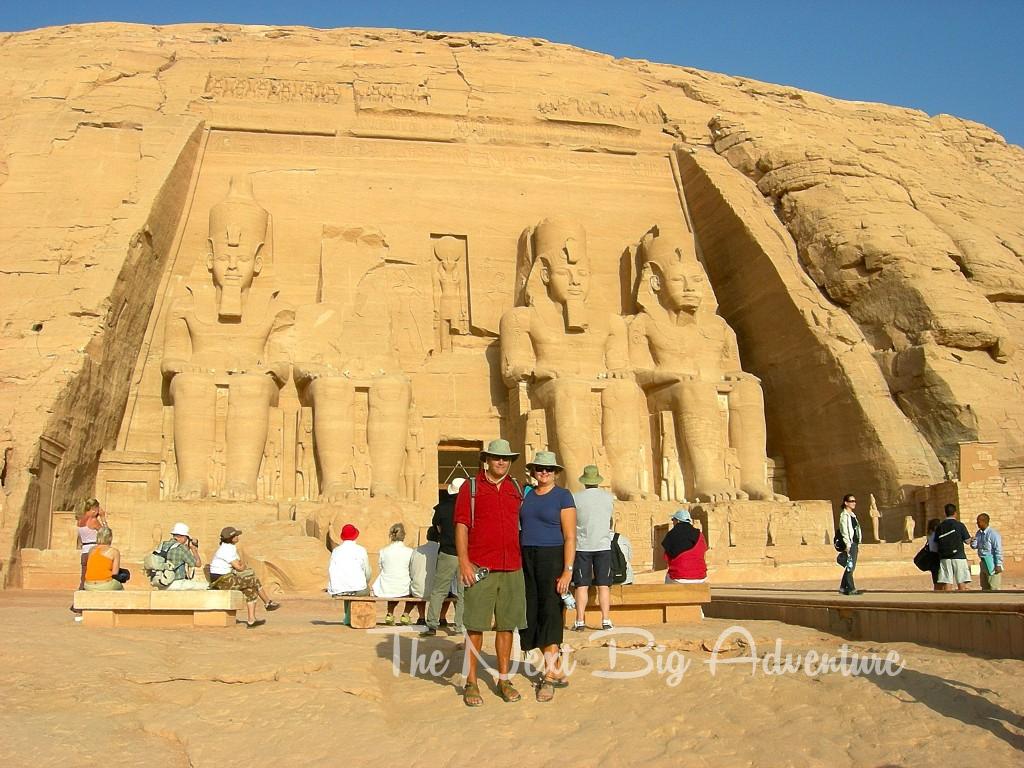
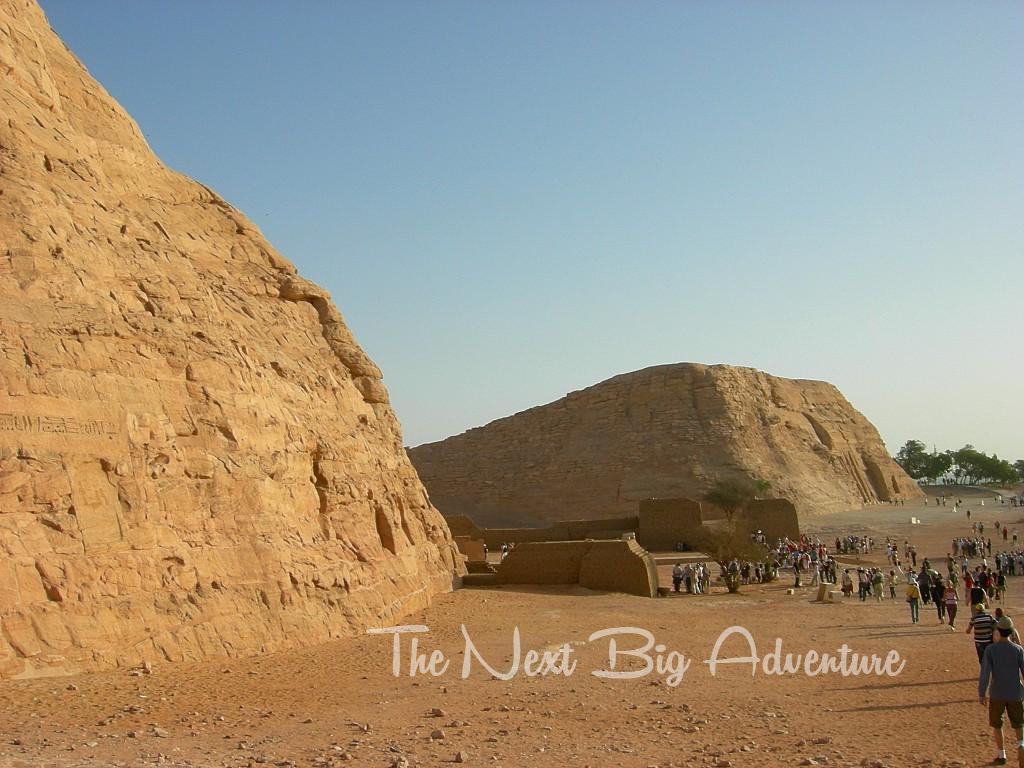
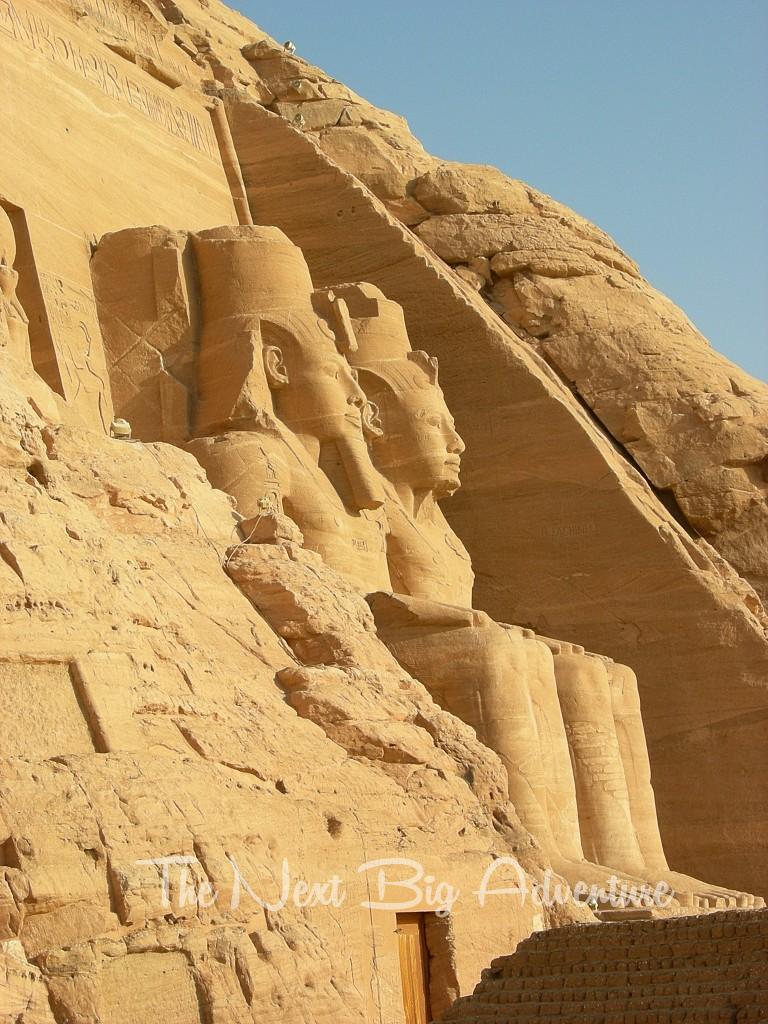
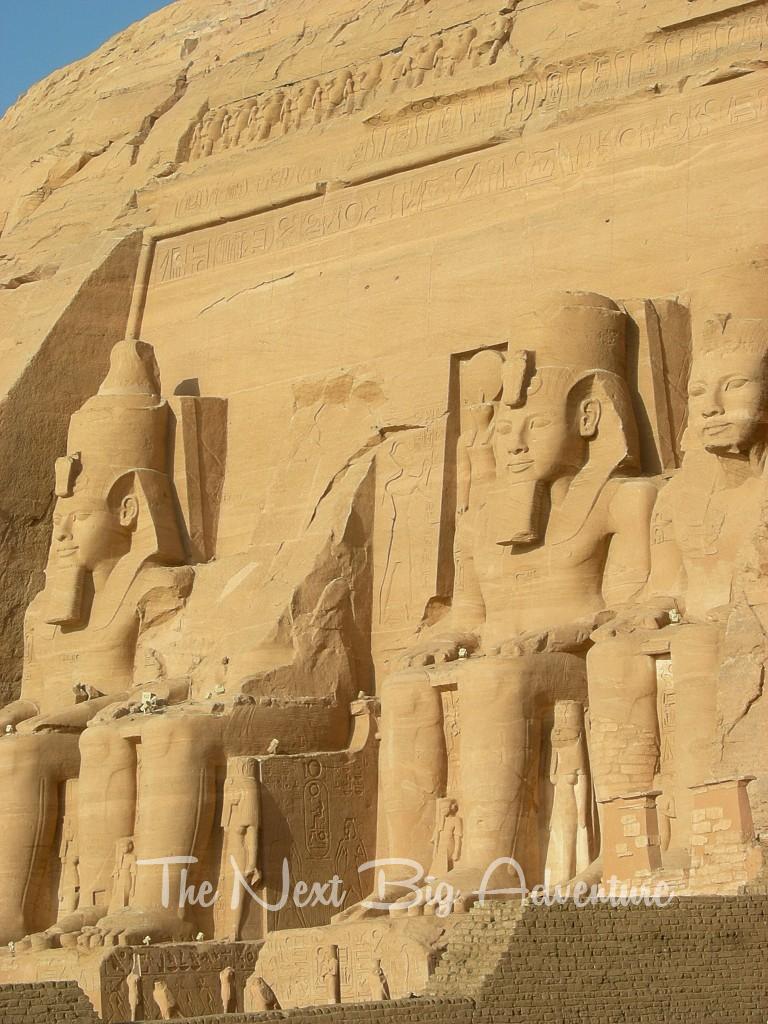
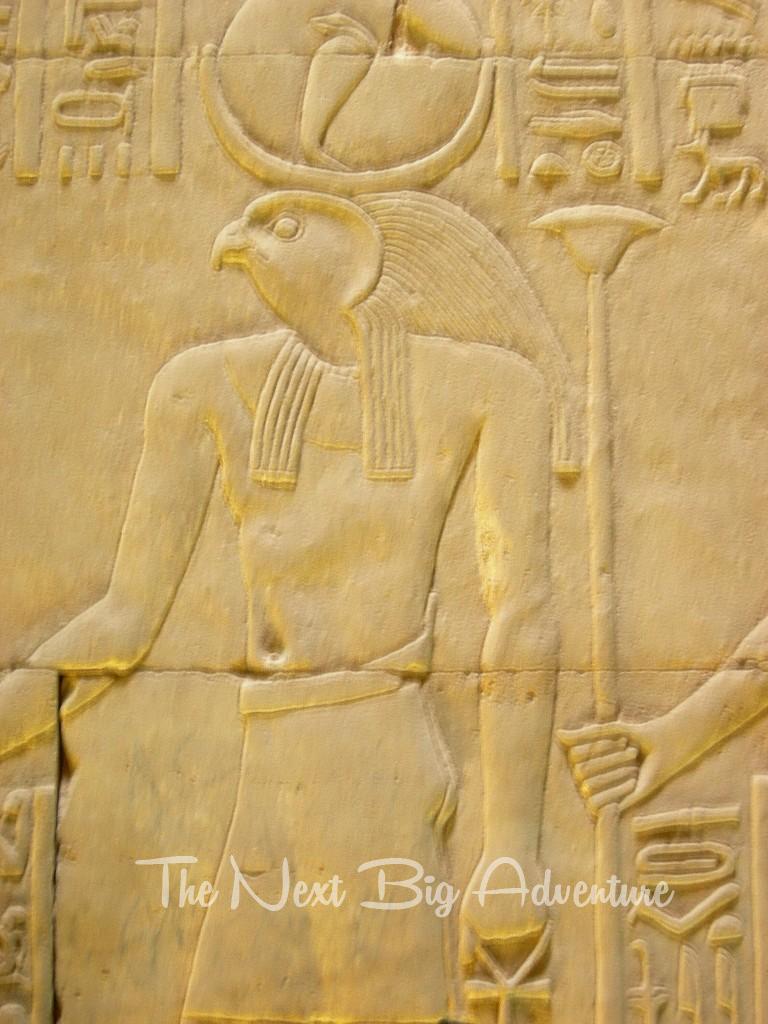
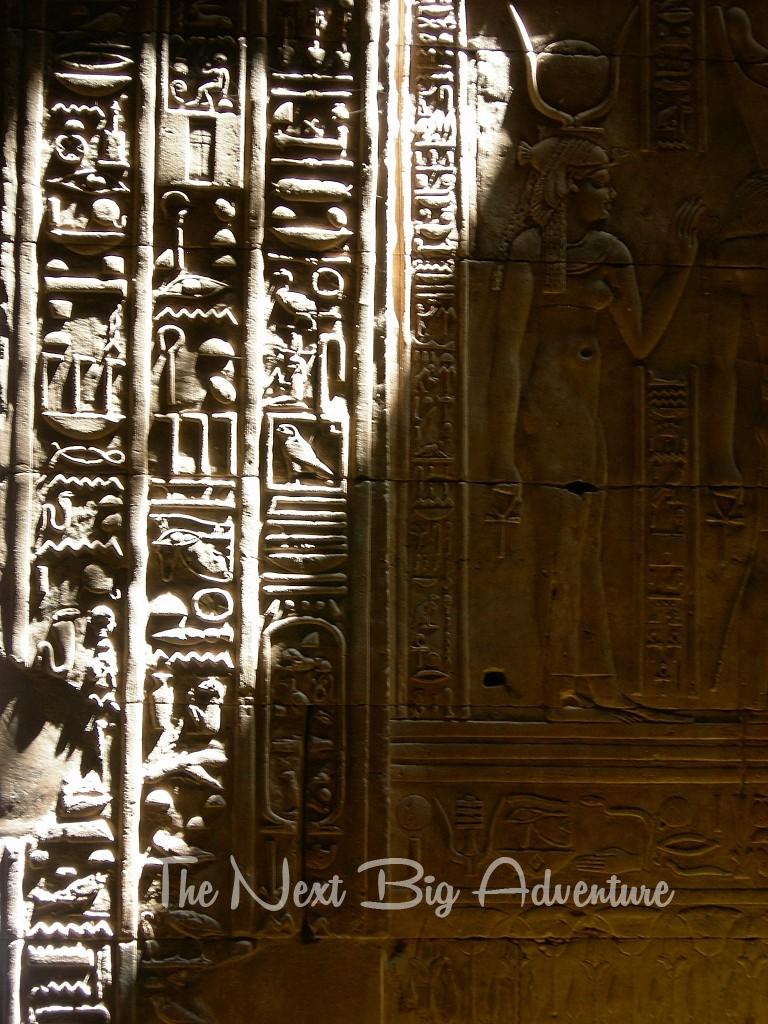
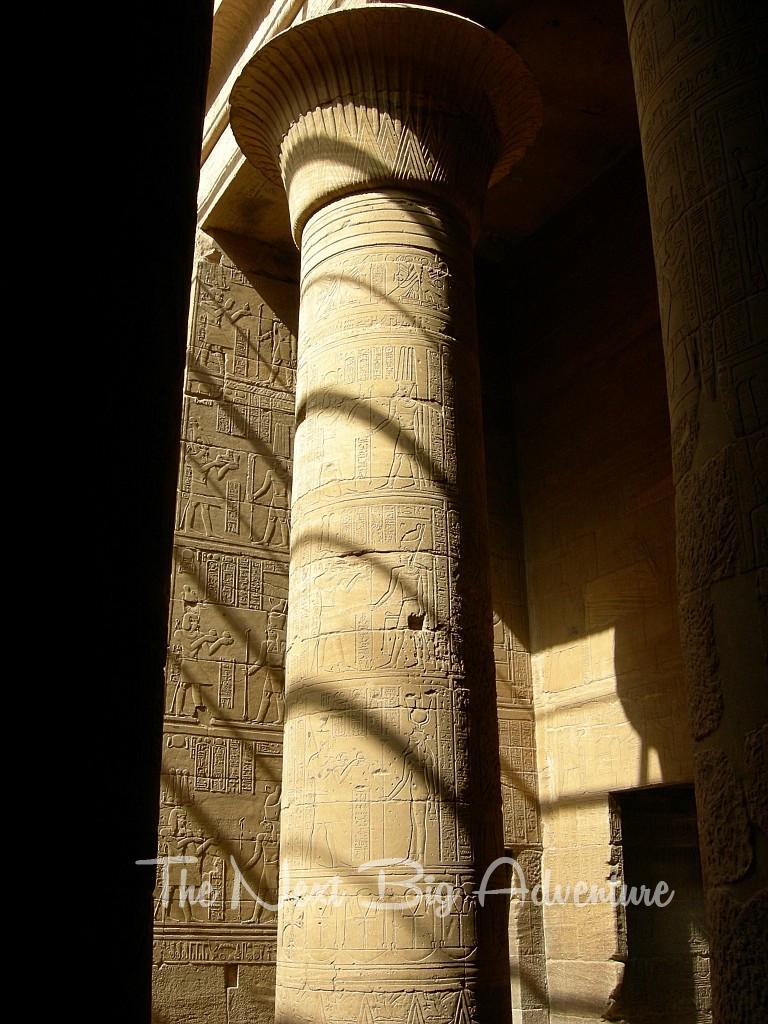
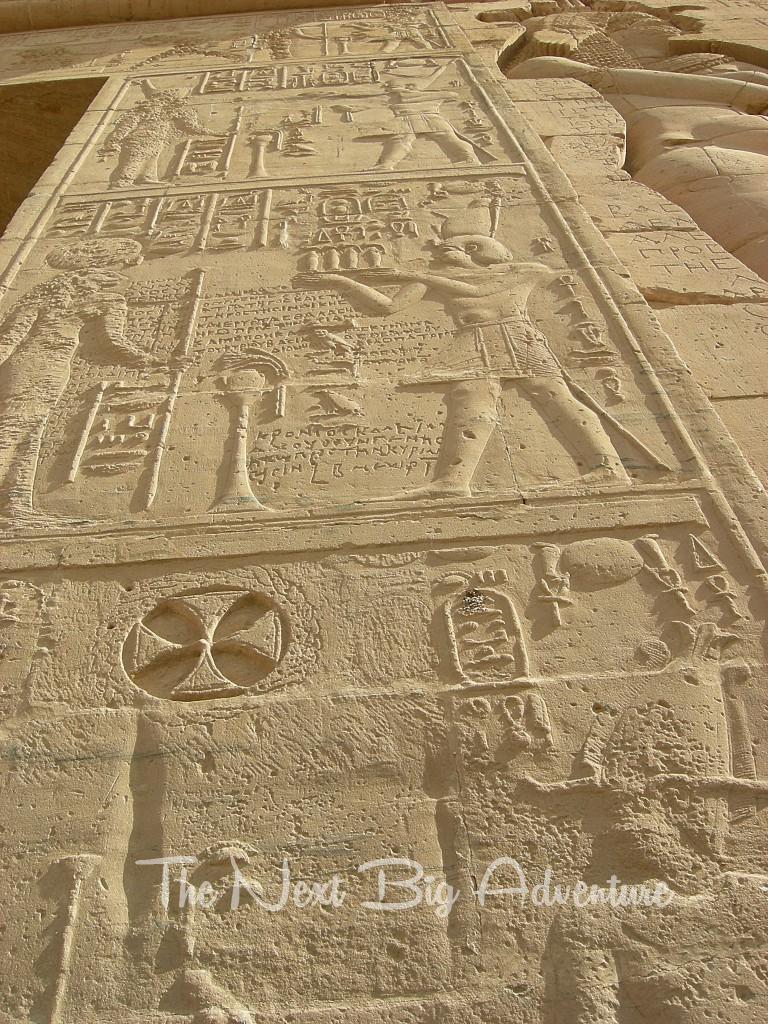
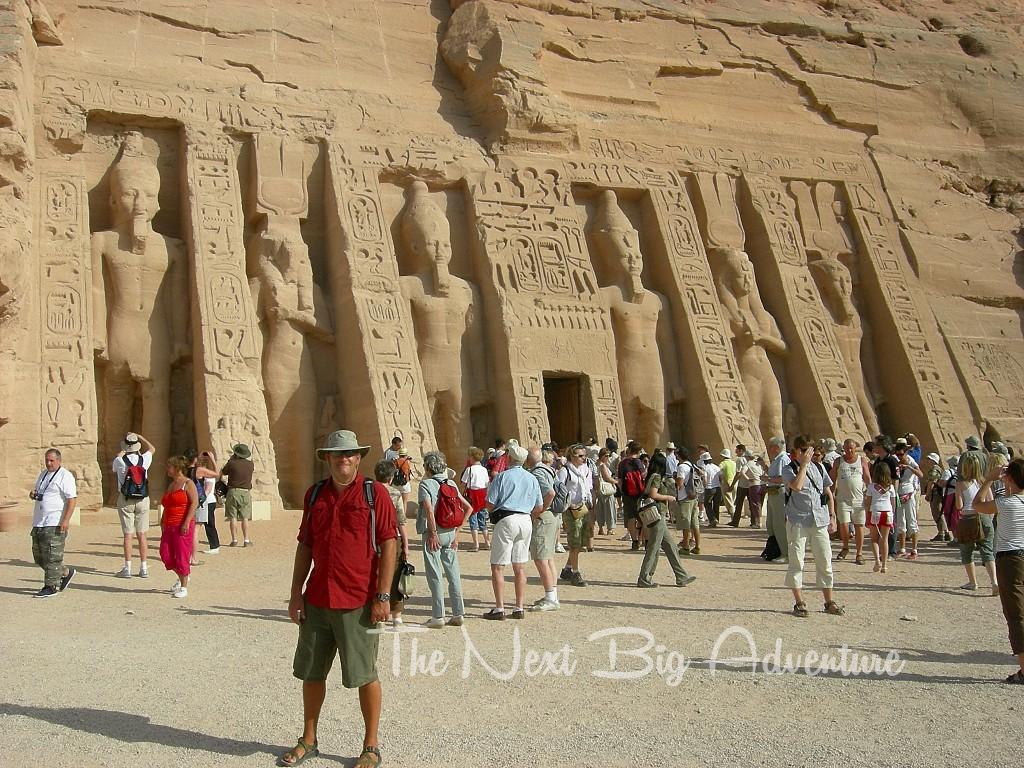
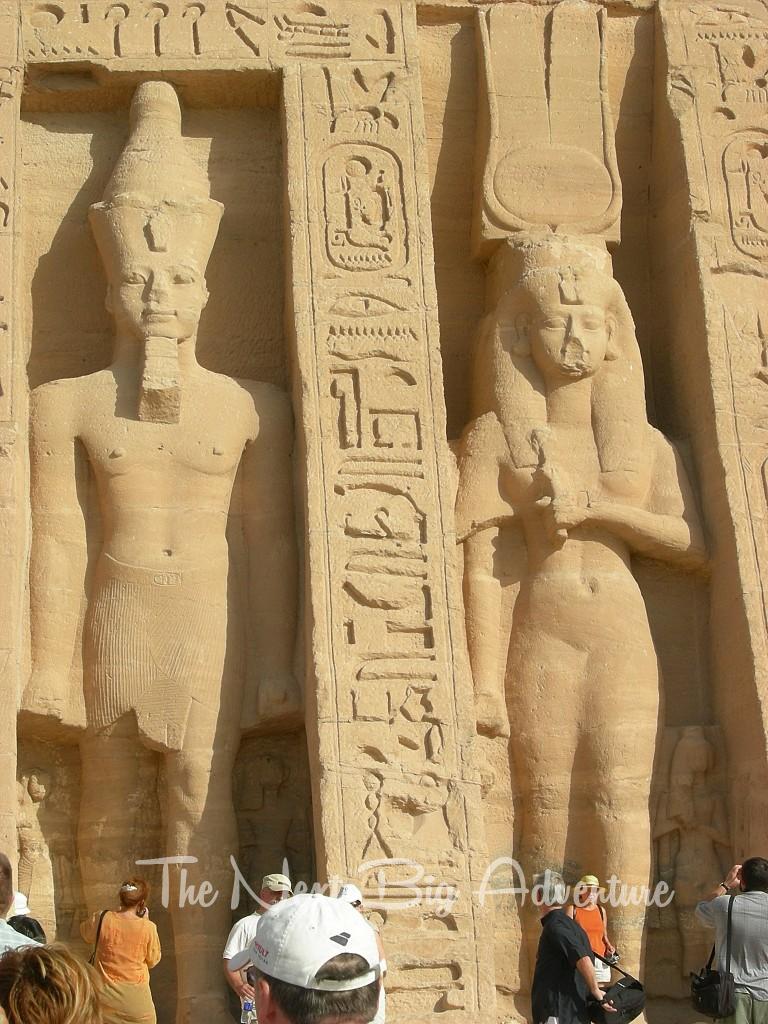
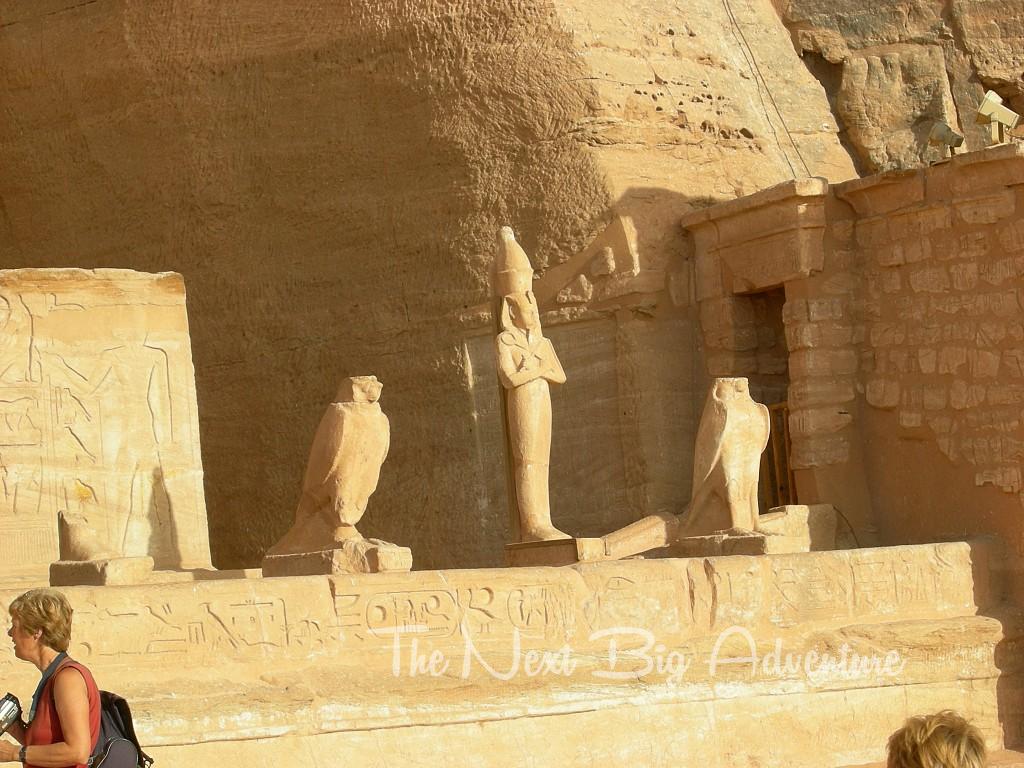
Greetings, from Hidden Hills, California I want to tell you, I loved this post. However, it is funny how I ended up on your post. I searched for montreal airport limousine on Bing and ended up on your website. I must say I do like your site and will check back soon. But I need to find the limo I was originally looking for first. Have a lovely day! adieu.
Not sure how that search found our page but welcome! Glad you enjoyed it.